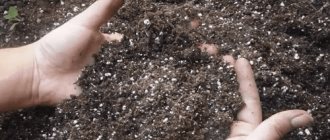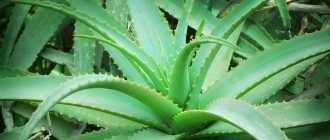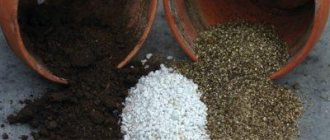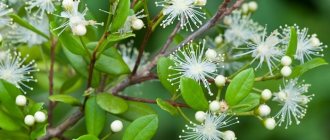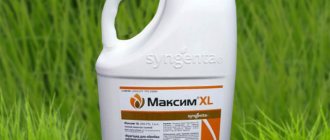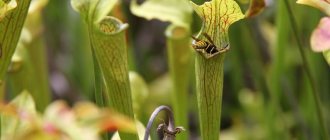The meaning of deoxidizing the earth
So far, there is only one technique that will reduce soil acidity - deacidification (or liming). It consists of introducing certain compounds.
Acidic soil is not suitable for most crops. In such soil, nature has created all the conditions for the habitation and reproduction of pathogenic microorganisms. Therefore, some nutrients are unavailable to plants.
To carry out the deoxidation procedure, the pH acidity level is determined, the product is selected, and the dosage is determined.
Why is acidic soil harmful?
High acidity of the soil prevents plants from absorbing beneficial elements. Even abundant feeding will not help correct this situation. Plants will not be able to receive and absorb nutrients.
An acidic environment is unfavorable for the development of beneficial bacteria. But dangerous fungi actively multiply in it, causing diseases of garden crops.
In addition, highly acidic soil contains a large amount of aluminum salts. In small doses, these compounds stimulate plant growth. But high concentrations of such substances reduce yields and can even lead to the death of green spaces.
The young wife of Valery Syutkin: what does she do
We clean wooden floors and furniture from oil stains: use home remedies
Kinchev, Garkusha, Stingray and others shared their memories of the rock club
Chlorine-based fertilizer should not be added to acidic soil. Such fertilizers increase acidity and increase the concentration of aluminum salts.
To improve the condition of the soil, calcium carbonate compounds must be added to the soil. This substance neutralizes acid and dissolves aluminum compounds. Next we will look at several ways to deoxidize the soil.
How to determine acidity
On the pH scale, the soil type is distributed as follows:
- acidic environment – pH value from 0 to 7;
- neutral – 7;
- alkaline – from 7 to 14.
Methods for determining soil acidity at a site:
- A modern and accurate method is to use a device called a pH meter. The electrode legs are loaded into the ground at a depth of 20–50 cm. The signal is transmitted to the display. The pH level is displayed on the screen.
- A lump of earth from the site is placed in a cloth bag. The bundle is lowered into a vessel filled with distilled water. Litmus strips are also immersed there and change color. The color of the strip is compared with the control scale. Each color has its own pH level. Red color indicates high levels of acidity.
Traditional methods for recognizing acidic soil:
- A lump of earth is watered with 9% vinegar. The liquid does not react to increased acidity. In a neutral environment, hissing will begin. If the soil is alkaline, the vinegar foams.
- Acidity is determined using a baking soda solution in the same way. But foam is expected in case of high pH. There will be no reaction in an alkaline environment.
- A lump of earth is immersed in a cooled, ready-made decoction of cherry or currant leaves. The decoction will turn purple in neutral soil, blue in alkaline soil, and red in acidic soil.
- Experienced gardeners determine the acidity level based on the beets growing on the site. If the foliage of the tops turns red, the soil is highly acidified; if the veins of the leaves turn red, the acidification is weak. On neutral ground, the tops remain their usual color.
- Gardeners estimate acidity by looking at the weeds growing in the area. Acidic soils are chosen by plantain, sorrel, horsetail, and tricolor violet.
Autumn soil disinfection for spring plantings
The soil is deoxidized at a pH below 5.5, but traditional methods do not give numerical indicators. Therefore, their effectiveness is questionable.
Why deoxidize/alkalize the soil (know the pH value)
Most cultivated and wild plants prefer slightly acidic and neutral soils. But if the soil is highly acidic or alkaline, it is difficult to grow even unpretentious plants on it. Sorrel, plantain, etc. are chosen for moderately acidic soils. Dandelions, clover, and chamomile grow well on slightly acidic soils. On alkaline – bindweed and poppy. That is, each plant INDIVIDUALLY prefers one or another level of acidity in the soil. Some plants prefer to grow in slightly acidic soil, others in neutral soil, and others in alkaline soil.
It should be borne in mind that acidic soil is a good environment for wireworms and other soil-dwelling insects - pests and their larvae.
In addition, for example, acidic soil accumulates iron, manganese and aluminum in the form of substances that are dangerous to plants. And if the environment is neutral, then heavy metals practically do not penetrate from the soil into plants and, accordingly, further into the human body.
Another important point. The acidity of the soil also affects the availability of nutrients from the soil to the plant. Most nutrients (nitrates, potassium, phosphorus, magnesium, sulfur, copper, boron) are maximally absorbed by the plant in the range of 6-7 (except for trace elements and calcium).
For all those who are seriously involved in agricultural technology, the acidity indicator is important. It is important to be able to determine not only the pH value itself, but also to know which indicator to focus on when cultivating a certain crop (for example, for garlic, the optimal pH value is 6.5-7).
Soil liming
The most suitable additive for deoxidizing the soil in the autumn is lime. In winter, the fertilizer is neutralized and the acidity will decrease.
Types of lime additives:
- Slaked lime (fluff). To obtain a deoxidizing agent, the usual lime is slaked with water. Acidic soil is neutralized.
- Crushed limestone. Affordable and high quality option. When used, magnesium carbonate is added.
Lime additives are laid on the bed or the entire area. If liming fails in the fall, other compositions are selected. For deoxidation of sandy and sandy loam soils for every 10 sq. m, 1 kg of limestone is added. If the soil is loamy or clayey, the rate is tripled.
It is noteworthy that the rate depends on the depth of fertilizer placement. Consumption will increase when buried by 20 cm.
Materials and methods for soil deoxidation
Soil deoxidation does not occur quickly, about six months. Autumn is the most favorable time to tackle this issue. The optimal time is September-October, or earlier, locally in sections after harvesting.
Deoxidation of the soil is the only way to raise its pH to the desired level (i.e., to 5.0 and above). This is done in the following ways/materials:
- dolomite flour;
- lime (liming);
- ash/wood ash (isolation);
- chalk and plaster ;
- complex deoxidizer preparations;
- green manure.
3.1. Dolomite flour for soil deoxidation
Deoxidation with dolomite (limestone) flour is one of the most popular and widespread methods today. “Dolomite” is not only a deoxidizer, it is a fertilizer (contains magnesium), good protection against larvae, slugs and other pests. And what’s important is that it’s absolutely safe for humans.
Dolomite flour is a loose or granular mass consisting of crystals (or their aggregates) of dolomite, used in agriculture for liming soils. Natural dolomite flour occurs among dolomites, dolomitized limestones, dedolomites, and other minerals and is a product of their loosening and leaching during weathering. It consists of 30 - 32% calcium oxide and 18 - 20% magnesium oxide. Dolomite flour is also produced by processing carbonate rocks.
The average rate of use of dolomite flour is on average 300g/1m2. Depending on the condition of the soil, the rate can be reduced or increased:
- strongly acidic – 550-600 g/m2;
- slightly acidic – 450-500 g/m2;
- with low acidity – 300 g/m2
- at pH values greater than 6, deoxidation with dolomite flour is not carried out.
Deoxidation of soil with dolomite (limestone) flour.
The flour is scattered in an even layer over the area and dug onto the bayonet of a shovel.
It is important to remember that dolomite flour, like other deoxidizing agents (for example, fluff lime), should not be mixed with organic matter and mineral fertilizers. They enter into chemical reactions with each other. Thus, if the soil becomes acidic in the fall, it is better to postpone the application of fertilizers to the spring.
3.2. Lime (liming) soil
Lime is actively used in agriculture to deoxidize mail and combat pathogenic phytopathogens.
Lime (from the Greek ἄσβεστος “unquenchable”) is a material obtained by firing carbonate rocks (limestone, chalk), consisting mainly of CaO and MgO. Lime comes in different forms: slaked lime/calcium hydroxide/hydrated lime - Ca(OH)2, quicklime - CaO, bleach - Ca(Cl)OCl, etc. It comes in powder or granular form. “Flush lime” is obtained by slaking quicklime with a limited amount of water, resulting in the formation of a white, crumbling, finely crystalline dusty powder.
But it is important to remember that lime is a very aggressive substance. After its use, it is necessary to restore the organic matter and vermicompost components of the soil (for example, after some time, water the soil with biological preparations “Baikal-M1”, “Fitosporin-M”, etc.). The use of lime blocks the processes of phosphorus consumption by plants for some time. Lime is used only in autumn.
Lime for soil deoxidation
It is recommended to use slaked lime, the so-called “fluff lime,” for liming the soil. If quicklime is used, then it is first filled with water for several hours. Slaked lime can be used immediately. Lime is scattered evenly over the soil and must be dug onto the bayonet of a shovel (depth about 20 cm).
The rate of application of lime, depending on the condition of the soil, the rate can be reduced or increased:
- strongly acidic – about 500 g/m2;
- medium acid – about 300 g/m2;
- slightly acidic – about 200 g/m2.
3.3. Wood ash (isolation)
Soil deoxidation with ash has now almost been abandoned. It is difficult to collect in the required quantity. The cost of a bag of ash in a store is disproportionately high for use as a deoxidizer. Consumption rate – 1.0-1.5 kg/m2
3.4. Chalk and gypsum for soil deoxidation
These deoxidizers are gentle. Just like the previous deoxidizers, they are evenly drank over the area and cut into the soil. The only negative is that they clump when wet (rain, wet soil, etc.). Sometimes chalk is dissolved in water and the soil is sawed through with the working solution:
Approximate consumption rate
- strongly acidic – 500-700 g/m2;
- medium acid – about 400 g/m2;
- slightly acidic – 200-300 gr./m2
The advantage is that chalk and plaster can be used both in autumn and spring.
3.5. Ready-made deoxidizers
Manufacturers of plant protection products produce ready-made compositions - deoxidizers. As a rule, these are mixed preparations consisting of dolomite flour, microelements, humus additives, etc. They are safe for plants, act quickly, are convenient to use and provide an integrated approach to the issue of soil restoration in the fall.
3.6. Green manure for soil deoxidation
Green manures are specially planted plants to improve the quality characteristics of the soil, including deoxidation. These are individual crops (mustard, sweet clover, phacelia, rye, lupine, rapeseed, etc.) or mixtures of plants, usually annuals, developing a powerful root system and rapidly growing above-ground green mass. The root system of green manure loosens the soil, especially of heavy composition (loamy chernozems), supplies a large amount of organic residues, and the above-ground mass serves as a good snow retainer; after mowing, it is used as mulch or incorporated into the soil as green manure.
But green manure cannot fully cope with the task of deoxidizing the soil; the pH value can only change slightly. To ensure results, green manure crops are sown on the site throughout the year. The scheme is as follows: sowed - bloomed - harvested, sowed again - bloomed - harvested, sowed again - bloomed - harvested, etc. until frost.
Read more about the purpose, selection, timing of sowing and harvesting green manure in separate materials on the website:
- TOP 10 best green manures from practice (planting standards and distinctive features)
- Siderat: WHAT is this? ... WHY are they sown? … Which to choose?
- Green manure: sowing and digging (timing, sowing methods, planting depth, etc.)
Liming the soil with dolomite flour
Dolomite powder is superior to lime. This is a non-aggressive environmentally friendly substance. Suitable for deoxidizing soil for digging.
Standards for liming:
- for low soil acidity – 300–400 g per 1 sq. m;
- for medium – 400 g per 1 sq. m;
- for high acidity – 500 g per 1 sq. m of soil.
Flour not only reduces acidity, but also fertilizes the soil.
Useful properties of flour:
- saturation of the soil with calcium, magnesium and other elements;
- restoration of structure;
- loosening the soil;
- destruction of pests, infections, fungi.
Dolomite flour is added before mineral fertilizers. Thus, fertilizing is well absorbed.
4 important rules for autumn soil fertilization
Gypsum
Gypsum dissolves well in an acidic environment. It reduces pH values to neutral values. If you add a large amount of this substance to the soil, its residues will remain unchanged. As soon as the acidity increases, the gypsum is activated again. It will immediately react with excess acid.
Apply the following amount of material per 1 m2:
- highly acidified soil - 400 g;
- medium acidic medium - 300 g;
- weak acidity - 100 - 200 g.
Gypsum is added to the ground only for digging. The powder is poured onto the surface of the soil and distributed evenly.
Delicious oatmeal and honey pie: a great dessert recipe without sugar and flour
Better than other sisters: by highlighting a favorite, a father fosters success in children
Neon French: a spring manicure that can be done without going to the salon
Deoxidation with green manure
Using green manure to reduce acidity is similar to liming. But grasses are not as aggressive as lime, and do not oversaturate the beds with calcium like other deoxidizers.
Green manure is sown in autumn and spring. Then it is mowed and dug up along with the soil or left as mulch.
There are many compounds that can reduce soil acidity. Choose materials according to your taste and capabilities. But do not forget that the acidity of the soil often changes. Therefore, the composition of the soil is analyzed in the fall and adjusted using the selected means. If the soil is suitable for plants in the garden or vegetable garden, prevention will not hurt.
The better soil prepared at home
Many people prefer to buy soil for indoor plants in stores. But you can create it yourself. In this case, the mixture will have the following advantages:
- the ability to follow the exact recipe, adding exactly as many substances as required by a certain type of plant;
- adaptation of seedlings to the new composition is much faster;
- allows you to save money.
Soil mixture recipe at home
Despite the advantages, there are also disadvantages. There is a high probability of infection of an indoor flower with fungi or diseases. To avoid this, it is necessary to pre-treat the soil components.
Main types of soil
Why do the leaves of indoor flowers turn yellow - what to do?
To mix soil that is suitable for growing a particular plant, you need to understand the qualities and properties of each type of soil. In this case, it does not matter at all whether the soil for indoor flowers was purchased or dug up with one’s own hands.
Light, medium and heavy soil mixtures
Although there is so-called "universal soil", it may not meet the needs of many plants grown in apartments. All soil mixtures should be divided into light, medium and heavy. Light soil mixtures are suitable for cacti and succulents. The light mixture consists of the following components:
- 4 parts peat;
- 2 parts of garden soil;
- 1 part of leaf or turf soil;
- 4 parts sand;
- a small amount of agroperlite, vermiculite, charcoal, drainage material.
Soil mixtures with a medium density composition are more versatile. They are used for growing decorative foliage and flowering plants in pots. The average mixture can be obtained by combining the following components in certain proportions:
- 4 parts peat;
- 3 parts of garden soil;
- 2 parts of turf land;
- 1 part compost or humus;
- 3 parts sand;
- some vermiculite and charcoal.
Preparation of earthen mixture
Heavy mixtures are recommended for large plants grown in tubs. These include tropical palms, vines, ferns, and azaleas. The composition of the heavy mixture is:
- 6 parts peat;
- 4 parts garden soil;
- 3 parts of leaf or turf soil;
- 2 parts sand;
- 2 parts compost or humus (can be replaced with vermicompost);
- additionally - bark, pine needles, sphagnum, charcoal.
Humus soil
This type of soil is created by mixing rotted manure with soil in a special hole or pile. A variety of this type of soil is vermicompost - the most fertile additive to soil mixtures for any indoor flowers. Essentially, this is the same humus, but produced using a humus worm.
Sod land
The type of soil taken from the place where various grasses grow is preferable - cereals or legumes, since such soil has the highest nitrogen content. However, the soil dug up from the top layer of the meadow is considered quite suitable.
Coniferous land
An acidic type of soil harvested where coniferous trees grow. Such soil is necessary for some indoor plants - for example, Saintpaulias, azaleas, gloxinias, begonias - as the main component of the soil mixture.
Leaf ground
The most ordinary forest soil or soil from a personal plot, taken from under a fruit tree, is very nutritious due to the rotted leaves it contains. It is often recommended to use leaf soil without other types of soil, only with the addition of a small amount of sand or perlite.
Sand
It is almost impossible to do without this component when preparing soil mixtures for various house flowers. Although sand does not have nutritional properties, it makes the soil looser and more permeable to moisture and air. However, it is worth considering that only river sand is suitable, and in no case construction sand.
Peat soil
Peat is the main component of finished soils, making them lighter and looser. Its disadvantage is that after it dries completely, it absorbs moisture very poorly, as a result of which watering the plant does not give the desired result - the water passes right through the substrate without staying in it.
Important! To prevent the plant from dying from drying out, it is advisable not to use this type of soil in its pure form.
How to acidify alkaline soil
Alkaline soil is also harmful to garden crops. This environment prevents plants from absorbing beneficial minerals. This causes chlorosis and other diseases.
Alkaline soil is much less common than acidic soil. It can be improved with acid-containing fertilizers, such as urea or high-moor peat. They neutralize alkali. The amount of fertilizing should be selected in accordance with the instructions on the package.
You can also use pine sawdust or rotted pine needles. For 1 m2 of land you will need 3 - 5 kg of material. These products acidify the soil. They will also act as mulch.
You can plant plants that neutralize the alkaline reaction of the soil. Such crops are called green manure. These include white mustard, lupine, and rapeseed. These plants will also help loosen soil that is too hard.
